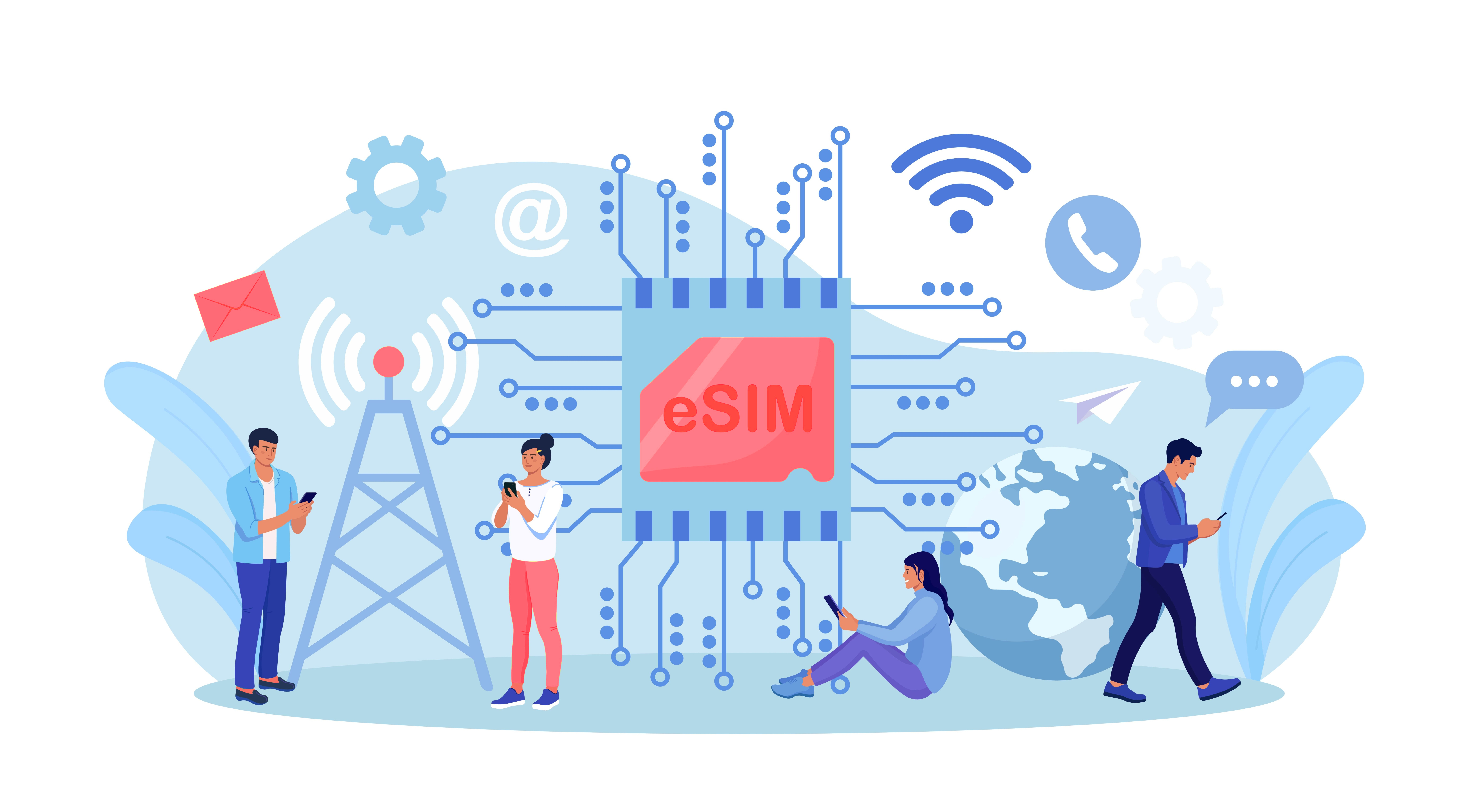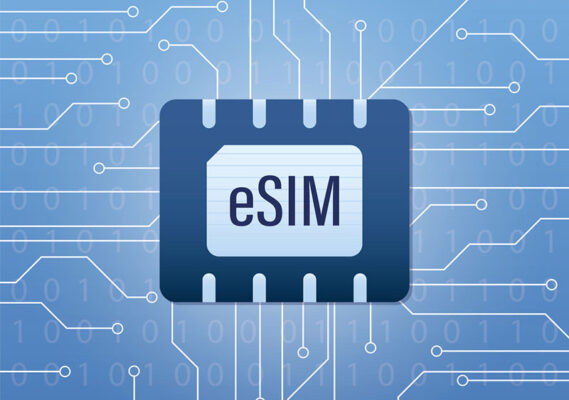eSIM technology has become a game-changer for globetrotters and tech-savvy users since its debut. Instead of fumbling with physical SIM cards, eSIMs offer seamless connectivity—letting you switch carriers and manage plans digitally.
This guide, built on the latest insights, offers travellers a friendly overview of how eSIMs work and why they’re perfect for life on the move.

What is eSIM?
eSIM, short for embedded SIM, is a small chip that’s embedded directly into your device’s hardware during manufacturing. Unlike traditional SIM cards, eSIMs are not removable and don’t require a physical slot.
Key features:
Embedded directly into the device’s motherboard
Can store multiple carrier profiles
Remotely programmable via software
eSIM is compliant with GSMA standards—the global association that sets protocols for mobile networks.
Advantages vs. Physical SIM:
No need to swap cards — switch carriers digitally
Store multiple network profiles in one device
More secure — can’t be lost or stolen like a physical SIM
Saves hardware space—ideal for compact wearables and IoT devices
How Does eSIM Work?
Instead of swapping out a SIM card, eSIM technology lets users download a mobile plan digitally. Here’s a simplified breakdown of the process:
Purchase or get a QR code from your mobile provider or travel eSIM platform.
Scan the code or enter activation details in your phone’s settings.
Your device connects to the carrier network, just like with a physical SIM.
It works via Remote SIM Provisioning (RSP), a standardized method that enables operators to remotely manage the eSIM profiles.

How it works behind the scenes:
Your device’s eSIM is assigned a unique identifier (EID).
The carrier sends configuration data over the internet.
The eSIM profile is downloaded and activated on your device.
This allows for instant network switching and multiple profiles without swapping physical cards.
How to Use eSIM When Traveling
Check device compatibility: Most recent iPhones (XS/XR onwards), recent Android phones, tablets, smartwatches
Buy a travel eSIM plan in advance from providers like Airalo, Holafly, iRoamly
Install: Scan QR code into Settings → Mobile/Cellular → Add eSIM
Use alongside your home SIM: Keep home plan active for calls/texts; budget travel data on eSIM
Manage data via app or settings; most support tracking and topping up
Switch networks easily via settings—handy in multi-country trips
Devices Compatible with eSIM Technology
More and more modern devices are being built with eSIM functionality. Here’s a list of some common ones:
Smartphones
Apple: iPhone XS and newer
Samsung: Galaxy S20 series and newer
Google: Pixel 3 and newer
Smartwatches
Apple Watch Series 3 (Cellular) and later
Samsung Galaxy Watch series
Huawei Watch 3
Tablets & Laptops
iPad Pro (3rd gen and later)
Microsoft Surface Pro LTE
Lenovo Yoga and HP Spectre series with LTE
Others
Some cars with connected infotainment systems
IoT devices and smart meters
Tip: Check your device settings or manufacturer’s website to confirm eSIM compatibility.
Where Can I Buy eSIM
1. Online eSIM Marketplaces
What it is: Websites or apps that sell eSIM data plans for different countries or regions.
How it works: You browse offers, choose a country/region, pay online, and receive a QR code or digital profile for activation.
Benefits: Instant delivery, global coverage, ability to compare many plans.
2. Mobile Carrier Websites & Apps
What it is: National or international mobile network operators offer their own eSIM plans, often through their official websites or mobile apps.
How it works: You log in, select a data plan, and download the eSIM directly to your device.
Benefits: Trusted carrier services, possibly integrated billing, good for extended use.
3. Airport Kiosks & Vending Machines
What it is: Physical eSIM service points located in airports—sometimes unmanned kiosks or staffed counters.
How it works: You pay at the machine or desk and receive a printed QR code or activation instruction.
Benefits: Convenient for travelers who didn’t purchase ahead; instant setup right after landing.
4. Retail Stores (Electronics / Travel Gear Shops)
What it is: Physical stores that sell SIM cards and travel accessories may also sell eSIM codes or offer help installing them.
How it works: Staff may assist in setting it up or provide a code to scan at home.
Benefits: In-person support, good for those unfamiliar with eSIMs.
5. Travel Agencies & Booking Platforms
What it is: Some travel booking websites or agencies partner with eSIM platforms and offer optional connectivity packages.
How it works: You can add an eSIM when booking flights, hotels, or packages, and receive it by email.
Benefits: One-stop convenience during travel planning.
6. Embedded Setup via Device OS (e.g., iOS / Android Settings)
What it is: Some phone operating systems integrate eSIM purchasing directly into device settings.
How it works: You go to "Cellular" or "Mobile Data" settings and browse available plans from supported carriers.
Benefits: Fast, secure, no need for third-party apps.
Future Development Trend of eSIM
As mobile technology advances, eSIM is poised to become the default standard for connectivity across smart devices. Its benefits go far beyond convenience—eSIM technology is a key enabler for a more connected, flexible digital ecosystem.
Here are the key trends shaping the future of eSIM:
Mainstream Adoption Across Devices: Smartphones, tablets, smartwatches, laptops, and even cars are increasingly being built with eSIM capability by default.
Carrier Expansion & Global Coverage: More mobile network operators worldwide are embracing eSIM provisioning. The GSMA estimates that over 200 carriers now support eSIM—and this number keeps growing.
Enhanced Remote Management: Future eSIM platforms will allow easier remote switching and management of plans, especially useful for businesses managing large fleets of connected devices.
IoT and M2M Integration: eSIM is revolutionizing the Internet of Things (IoT) space by allowing seamless connectivity for smart meters, medical devices, agricultural sensors, and more. This helps reduce downtime and enables instant global deployment.
Smaller, Sleeker Devices: As physical SIM trays are phased out, manufacturers can create even thinner, more compact designs for wearables and ultra-slim phones.
In summary, eSIM is not just a trend—it's the future of mobile connectivity. As more carriers adopt the standard and more devices are built with it in mind, eSIM will reshape how we stay connected, making it smarter, faster, and more seamless than ever before.
FAQ
1. Is eSIM better than a physical SIM?
It depends on your needs. eSIM offers greater flexibility, especially for travelers or those who switch carriers often.

2. What happens if I lose my eSIM device?
You can remotely lock your device or deactivate the eSIM using the carrier’s tools. The eSIM profile can also be moved to a new device if needed.
3. Is eSIM available for prepaid plans?
Yes, many carriers now support eSIM for both prepaid and postpaid plans.
4. How do I check if my device supports eSIM?
Go to your device settings → Cellular/Mobile Network → Check for “Add eSIM” or similar options.
Conclusion
eSIM is transforming how we connect to mobile networks. It offers a smarter, more flexible, and efficient alternative to traditional SIM cards.
Whether you're a global traveler, a tech enthusiast, or just someone tired of SIM card swapping, adopting eSIM can simplify your life—and keep you connected wherever you are.
As technology evolves, expect to see even wider adoption of eSIM in everyday devices.
